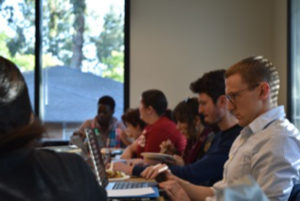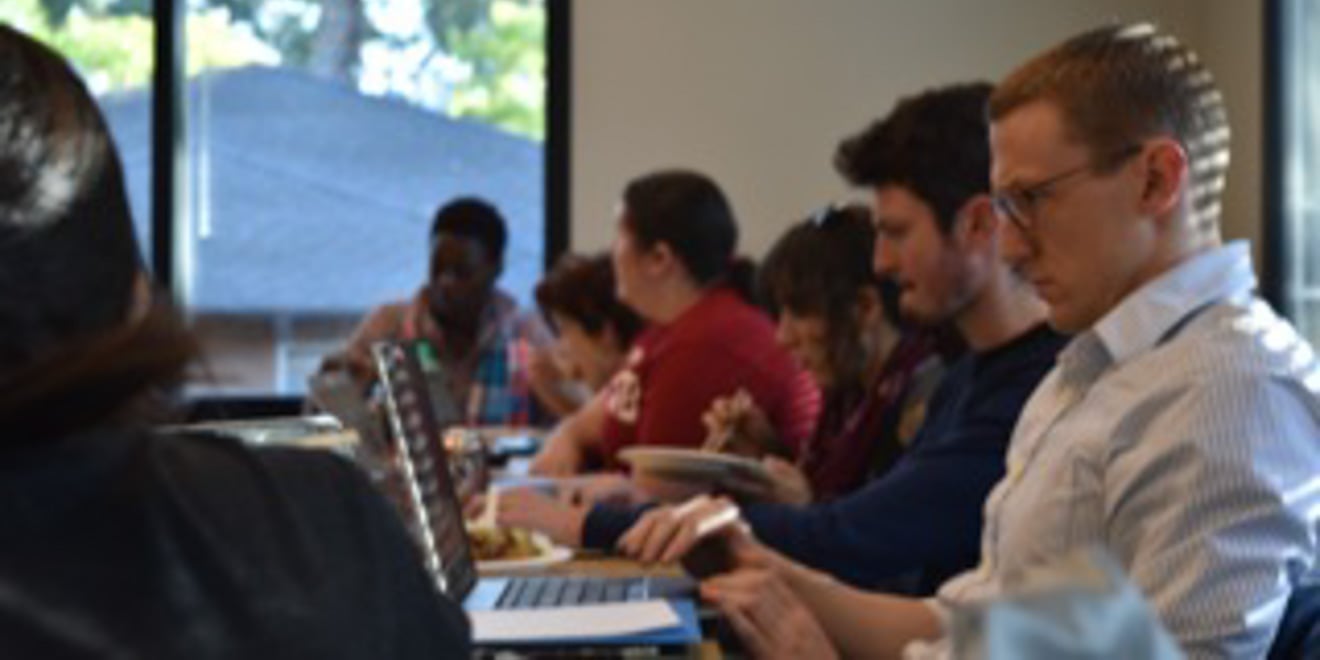
In its meeting on Wednesday, the Graduate Student Council (GSC) discussed resolutions to fix the discrepancies on ballots in the recent GSC election. Council members voted to resend ballots to students in the Law School and the School of Medicine as well as voters affected by an originally incomplete link who were unable to re-vote by the Friday night deadline.
This partial redo would include re-voting on all aspects of the original ballot apart from the Executive slate. This is because the margin of votes in the Exec race was significant enough to be unaffected by resending votes, according to the Elections Commission and the Stanford Office of Institutional Research and Decision Support. Thus, the executive picks for the Associated Students of Stanford University (ASSU) remain unaffected by the ballot glitches.
Elections Commissioner Paul Serrato ’19 said the Elections Commission worked closely with the Office of Institutional Research and Decision Support on ballot design and delivery for the new Qualtrics System, a more mobile-friendly platform for voting. Institutional Research provided technical components such as enrollment data.
Serrato said one of the key concerns regarding graduate student voter turnout was that in past years, there have simply not been enough overall votes to pass special fees and amendments.
“We all know historically, the turnout rate has been low [for graduate students],” Serrato said.
He cited a significant improvement in graduate student voter turnout this year, with a turnout rate of 25.61 percent. He noted that part of this improvement came from reminder emails. Ballots were improved by linking individual items to the voter guide site, and selection choices were randomized, although some Council members, including Isa Rosa M.S. ’16 and Yiren Shen J.D.’18, felt that this information might have been false.
Voters who opened the link within the first 20 minutes after midnight on Thursday were unable to view all possible GSC candidates. Serrato said that the Elections Commission was able to check in with Institutional Research and fix the issue for every ballot thereafter.
Post-issue, the Commission again consulted with Institutional Research to see how many voters were affected. Out of 15,913 ballots, Serrato said, 169 voters received a faulty ballot. Research found that 41 of these voters had opened the ballot but did not vote. The Elections Commission resent a fixed ballot to all 169 voters at 5:36 p.m. on Friday.
Serrato said 83 votes were recast after the fixed ballot was sent.
With this information, the Commission and Institutional Research ran three simulations to see if the affected votes had an effect on the results. The first simulation ran only the original votes cast with the faulty ballot. The second simulation counted the original votes but replaced the 83 votes recast after the fixed ballot was sent. The third simulation ran the original votes, replaced the 83 recast votes and removed the difference of the 83 recast votes from the 169 faulty ballots, or 86 votes.
The simulations showed no material change in the outcome of who won positions.
Serrato said the main concern originated when research showed that turnout for law students was low. The Elections Commission found that a glitch had not allowed registered law students to see the Law School’s district ballot. This also happened to a lesser extent to students from the Medical School filling out the Medical School district ballot, a concern that Serrato said he learned of the day prior to the GSC meeting. Both of these elections were uncontested, but turnout was extremely low: Only four law students cast votes for the candidate, Ryan Roberts J.D.’18.
Research showed that this glitch affected 90 law students. As the Medical School data came in so recently, the Elections Commission has yet to know the extent of the glitch for those students.
“I think it is important to note that these glitches were supervised by not only students in the Elections Commission but also institutional research from the University,” he said.
Serrato proposed a special election to send ballots to the people who were affected by this additional glitch and wanted to work with the GSC for help sending these ballots.
GSC member Isa Rosa M.S. ’16 from the Graduate School of Engineering was one of the students who opened the ballot within the first 20 minutes of its release. After receiving her corrected ballot, Rosa said she was concerned because the five “at large” candidates were at the top of the list of candidates, similar to what she saw on a friend’s ballot. “At large” candidates are candidates elected to the council who are not the specified member from their respective district. After discussion, most other members of the GSC said that their ballots were exactly the same.
“‘At large,’ the ballots may not have been randomized,” Rosa said. “Studies show bias for first people on the ballot.”
Serrato responded that all candidates, including the write-in feature, were randomized.
Rosa wanted a complete re-vote at first, but the idea was not supported by other GSC members. She was also concerned that voters with the corrected ballot had a short amount of time during an inconvenient time window to fill it out.
GSC member Rosie Nelson from the Graduate School of Education echoed this concern, saying she hoped that future elections would consider that members of the Jewish community who hold Sabbath cannot use technology on Friday nights.
Jelani Munroe ’16, Stanford Student Enterprises CEO, said that as the Elections Commission was limited to 48 hours for voting and that was the soonest the fixed ballots could be sent, the time frame should be considered reasonable.
GSC member Shen also noted that there was no “back” button at the end of the ballot, meaning students could not go back and review their votes. She said this may have deterred some voters from voting or prevented them from changing their minds.
Serrato said that even an unsubmitted vote would be counted as a partial ballot, including only what the student had voted on. This has been part of the rules for years, he said.
GSC member and Elections Commission member Kali Allison from the School of Earth Sciences said that some things are beyond technical ability to fix.
“I do think that some technical issues are beyond our power,” Allison said. “There is not much we can do as the commission to respond to everybody.”
GSC members recognized that the extensive information from Institutional Research likely uncovered issues that had existed in previous elections.
The Council decided that opening ballots for the 48-hour period of this Sunday through Monday would be fair and would allow the Elections Commission to review and present the results for certification at next Wednesday’s meeting. Candidates will be notified of the recast so they do not campaign between now and Sunday.
Only five members of the GSC were eligible to vote on the motion for the recasted voting for the medical and law students, as well as the students affected by the minimized time to submit ballots on Friday. These were the only two motions regarding elections to pass.
Concerns over disillusionment rose with the option of a redone election, stopping all motions on sending corrected ballots to students beyond those in the Law School, School of Medicine and those affected by the original glitch. Although voter turnout was significantly higher than in previous years, overall turnout is generally low. GSC members did not want to base election results on a “re-election” that might deter a significant portion of voters.
“Let’s remember that 70 percent of students didn’t vote the first time,” GSC Co-Chair Terence Theisen said.
The GSC did not certify any campaign slates beyond the Executive slate. The Council also tabled motions for impeachments and censures regarding the two Constitutional Council members questioned by the Undergraduate Senate (UGS) last night. The GSC will wait to make a decision until the UGS makes its decision.
The Daily has sent confirmations of each of these statistics to the Commissioner, but at the time of publishing, has not yet heard further comment.
Contact Gillian Brassil at gbrassil ‘at’ stanford.edu.
